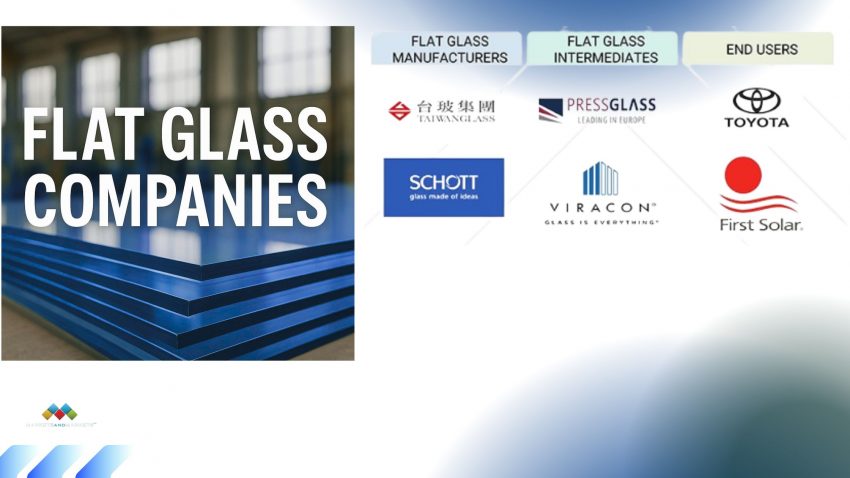Flat glass is everywhere—from the windows in your office building to the screens on your smartphone, from automotive windshields to solar panels powering clean energy. But behind this transparent, often overlooked material is a complex and competitive global industry, driven by engineering excellence, scale, and innovation.
Flat glass companies are no longer just producers—they are solution providers, technology partners, and sustainability leaders. This blog breaks down how the flat glass business is evolving, who’s leading the pack, and what industry stakeholders need to know to stay ahead.
What Defines a Modern Flat Glass Company?
Traditionally, flat glass manufacturers focused on producing float glass using the standard process: melting raw materials like silica sand, soda ash, and limestone, then forming a flat ribbon of glass. But the definition has expanded.
Today’s top flat glass companies differentiate themselves with:
- Advanced coatings and processing (low-E, tinted, laminated, tempered)
- Customized architectural and automotive solutions
- Integration into solar and energy-efficiency ecosystems
- R&D in lightweight, durable, and high-performance glass
- Vertical integration—from sand to finished glass units
Their goal is not just volume, but value—adding function, performance, and sustainability into every square meter of glass.
Major Segments Served by Flat Glass Companies
- Construction & Architecture
This is the largest sector, driving demand for float, laminated, and insulated glass for energy-efficient buildings. High-rise façades, skylights, smart windows, and interior partitions all rely on advanced flat glass products. - Automotive
From windshields and sunroofs to HUD (Head-Up Display) panels, automotive glass requires safety, strength, clarity, and increasingly, intelligence (embedded sensors, coatings, etc.). - Solar Energy
Tempered flat glass is a key component in photovoltaic panels. As the solar industry scales, so does the demand for anti-reflective, high-transparency solar glass. - Electronics & Displays
Smartphones, tablets, TVs, and even wearable tech rely on ultra-thin, highly durable flat glass. Specialty companies cater to this niche with precision and innovation.
Top Global Flat Glass Companies to Know
1. Saint-Gobain (France)
A legacy leader, Saint-Gobain is heavily invested in energy-efficient and sustainable glass solutions. Their SGG PLANITHERM and COOL-LITE ranges are staples in green buildings worldwide.
2. AGC Inc. (Japan)
AGC (formerly Asahi Glass) is a global innovator across automotive, construction, and electronics glass. Their vacuum insulating glass (VIG) and UV-cut glass are highly sought after.
3. Guardian Glass (USA)
Guardian operates some of the world’s most advanced float glass lines. Their SunGuard range offers solar control coatings for both commercial and residential buildings.
4. NSG Group / Pilkington (UK/Japan)
Pilkington pioneered float glass. Today, NSG/Pilkington focuses on smart glass, fire-resistant glass, and coated architectural glass for energy savings.
5. Şişecam Group (Turkey)
Şişecam is a growing force in Europe and Asia, known for its integrated production and strong presence in architectural and automotive glass.
6. Xinyi Glass (China)
Xinyi is one of the largest float glass manufacturers in Asia. With aggressive expansion and investment in solar glass, they are a key global player.
Industry Trends Reshaping the Landscape
1. Sustainability First
From reducing furnace emissions to creating recyclable and energy-saving products, companies are under increasing pressure to align with ESG goals.
2. Smart Glass Integration
Electrochromic glass, switchable privacy glass, and embedded sensor systems are making flat glass a tech interface, not just a building material.
3. Localized Manufacturing
Due to high logistics costs and growing trade barriers, regional manufacturing is seeing a boost, especially in North America, India, and the Middle East.
4. Solar Sector Synergy
As solar PV adoption accelerates globally, glass companies that can serve energy players with high-performance solar glass will see exponential growth.
Challenges to Watch
- High Capital Costs: Setting up a float glass plant requires major investment. The market is often dominated by companies with deep pockets and global infrastructure.
- Raw Material Volatility: Soda ash, silica, and energy are subject to cost swings that affect pricing and profitability.
- Environmental Regulations: Tightening emission norms in Europe and parts of Asia are pushing companies to retrofit or replace furnaces with greener technologies.
Download PDF Brochure :
Conclusion :
The flat glass industry is evolving rapidly—from a volume-based commodity model to a value-driven, innovation-first ecosystem. Leading companies are those that can marry scale with science, efficiency with sustainability.

